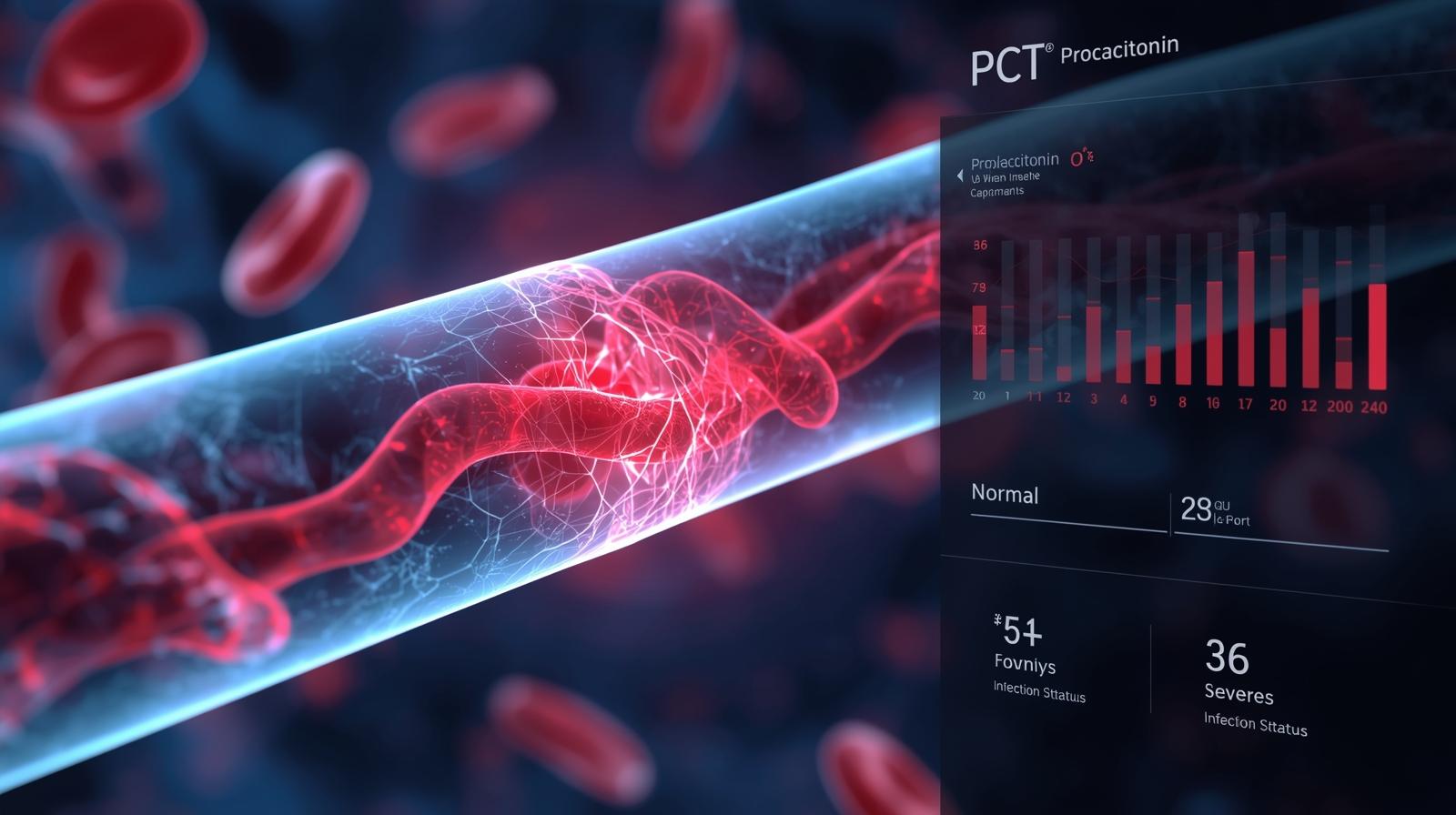
When you or a loved one is admitted to the hospital with a sudden high fever, doctors often face a critical question: Is this caused by a bacterial infection or something else? The answer matters because it guides treatment decisions, especially when it comes to antibiotics. One test that helps provide this answer is the Procalcitonin (PCT) test.
What is Procalcitonin (PCT)?
Procalcitonin is a small protein that the body produces in response to bacterial infections. Normally, PCT levels in the blood are very low. But when a bacterial infection spreads in the body—especially in serious conditions like sepsis—the level of procalcitonin rises sharply.
Unlike some other markers of infection, PCT has a special advantage: it usually does not increase much with viral infections or non-infectious inflammation. That makes it an excellent tool for doctors to differentiate bacterial infections from other causes of fever.
Why is the PCT Test Important?
The PCT test plays a vital role in modern medicine because it helps answer crucial questions:
- Do antibiotics need to be started?
Since antibiotics are only effective against bacteria, knowing whether a fever is bacterial or viral helps doctors avoid unnecessary use. - How severe is the infection?
Rising PCT levels often indicate a serious infection, such as sepsis—a life-threatening condition where the body’s response to infection can damage organs. - Is the treatment working?
By measuring PCT levels over time, doctors can see whether antibiotics are effective. If levels drop, it usually means the infection is under control. - Can antibiotics be stopped?
Prolonged antibiotic use can cause resistance and side effects. A decreasing PCT level may reassure doctors that antibiotics can safely be discontinued.
When Do Doctors Recommend the PCT Test?
Doctors may order a PCT test in several situations:
- Suspected Sepsis: If a patient shows signs of severe infection, especially with organ dysfunction.
- Pneumonia or Respiratory Infections: To guide whether antibiotics are necessary.
- Post-Surgery or ICU Patients: To check if fever is due to infection or another cause.
- Monitoring Therapy: To track how well the infection is responding to treatment.
How is the PCT Test Done?
The test itself is quite simple. A small blood sample is taken, usually from a vein in your arm. The sample is then analyzed in a laboratory using advanced immunoassay methods.
You don’t usually need to fast or make special preparations for this test. Results are often available within a few hours, which is crucial for fast medical decisions in critical care settings.
Understanding PCT Test Results
Interpreting PCT results is not always black and white. Instead, doctors look at levels in combination with your symptoms and other tests. Here’s a general guide:
- PCT < 0.1 ng/mL → Normal. Infection is unlikely.
- PCT 0.1 – 0.5 ng/mL → Mild increase. May suggest localized infection or early stage.
- PCT 0.5 – 2.0 ng/mL → Significant increase. Possible systemic bacterial infection or sepsis.
- PCT > 2.0 ng/mL → Strong indication of severe bacterial infection or sepsis.
👉 Keep in mind: Only a doctor can interpret your result correctly, considering your overall health condition.
PCT Test vs. Other Infection Markers
You might wonder, “Why not just use common blood tests like CRP or WBC count?”
- CRP (C-reactive protein): Increases in many types of inflammation, not just bacterial infections.
- WBC (White Blood Cell count): Can be high in infections, but also in stress, trauma, or steroid use.
Compared to these, PCT is more specific for bacterial infections, making it especially useful in avoiding unnecessary antibiotics.
Benefits of the PCT Test
- Early detection of sepsis – helps save lives.
- Guides antibiotic use – prevents resistance and protects good bacteria in your body.
- Monitors treatment progress – gives confidence that therapy is working.
- Supports clinical decisions – especially in critical care and ICU.
Limitations of the PCT Test
Like every test, PCT has some limitations:
- Levels may rise in severe trauma, major surgery, or burns, even without infection.
- Not all bacterial infections cause a high PCT.
- It may take a few hours after infection onset for levels to rise.
- Interpretation always requires clinical judgment and other diagnostic tools.
Who Needs a PCT Test?
The PCT test is not for routine checkups. It is usually ordered for:
- ICU patients with unexplained fever.
- Patients with pneumonia or suspected lung infections.
- People at risk of sepsis, such as those with weakened immunity.
- Patients being monitored for antibiotic therapy duration.
Living with the Results: What Patients Should Know
If your doctor orders a PCT test, here’s what you should remember:
- Don’t panic if your PCT is slightly elevated—context matters.
- Trust your doctor’s advice—they will interpret the results with your symptoms.
- Follow antibiotic instructions—don’t stop them early unless advised.
- Stay informed—understanding your lab tests helps you take an active role in your healthcare.
Final Thoughts
The Procalcitonin (PCT) test has transformed the way doctors manage infections, especially sepsis. By helping distinguish bacterial infections from other causes of fever, it not only guides antibiotic use but also saves lives through early intervention.
